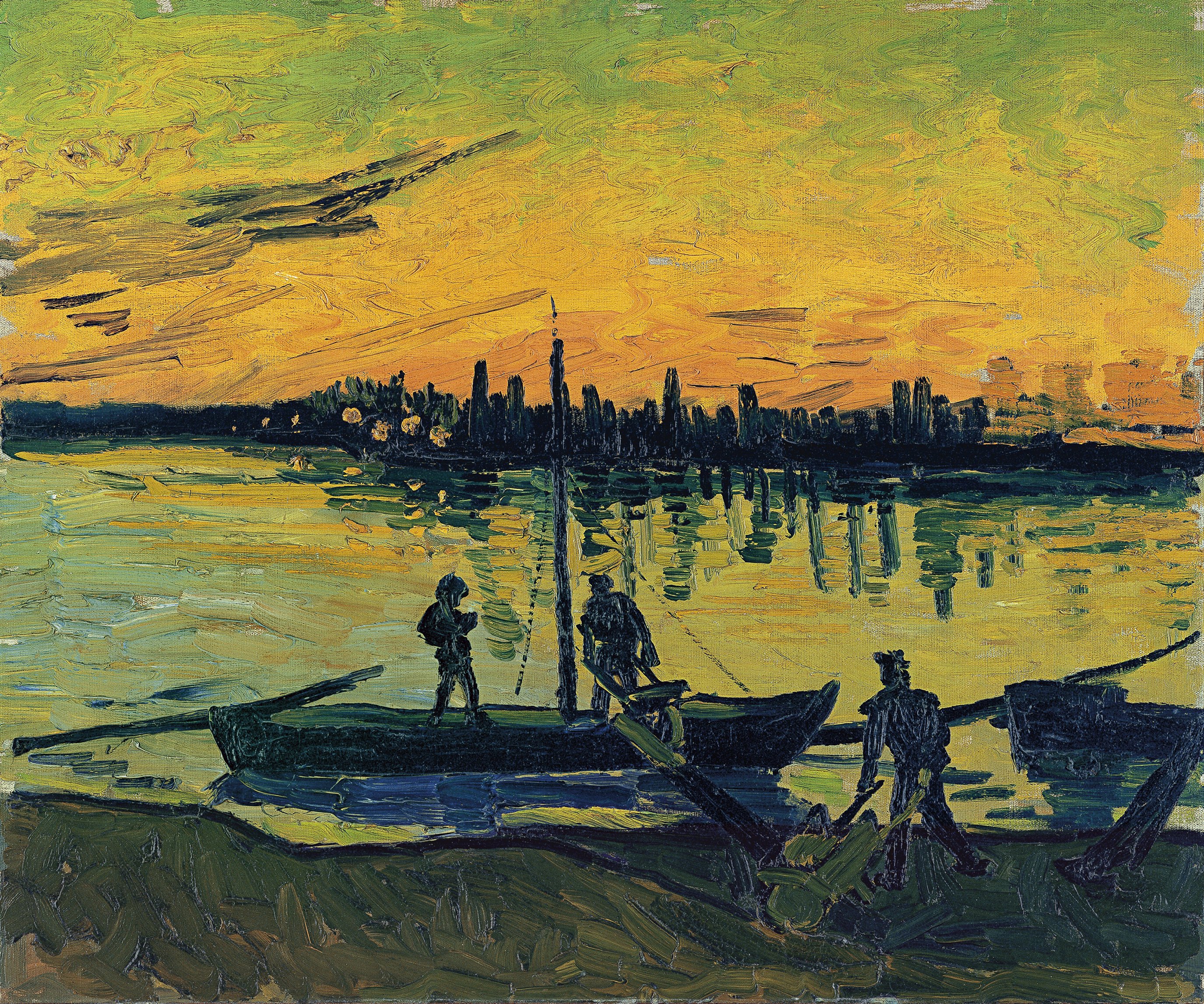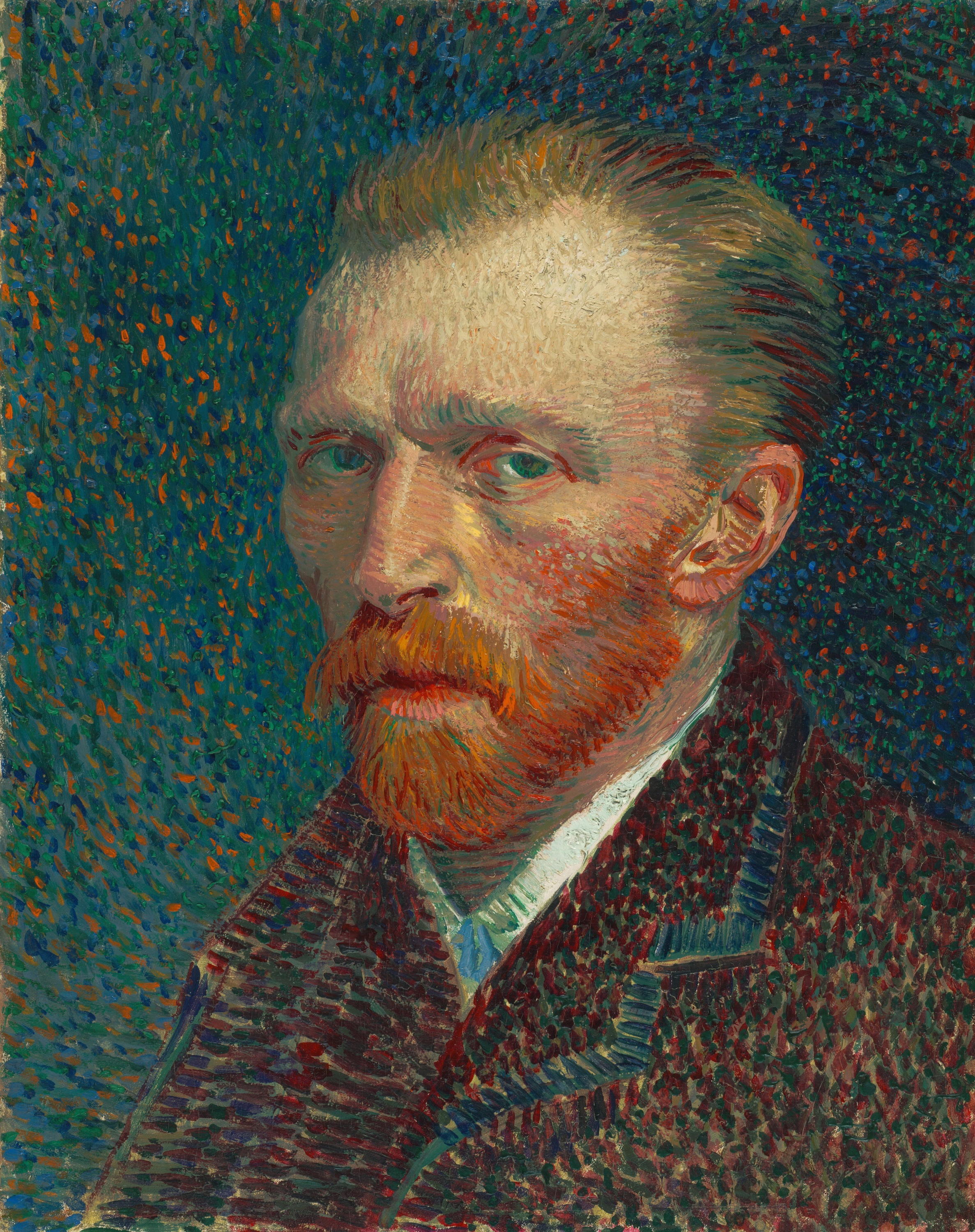When Vincent van Gogh arrived in Arles in February 1888 seeking the luminous atmosphere of the French Midi, he eschewed Pointillist and Impressionist methods in favor of more synthetic forms and louder colors. The Stevedores in Arles, which clearly evidences this stylistic change, is painted with thick, elongated brushstrokes and marked color contrasts. It shows a view of the Rhône with a blazing sunset in which the motifs of the composition—clearly influenced by Japanese art—stand out against the light. “I saw a magnificent and strange effect this evening,” wrote Vincent to his brother Theo from Arles at the beginning of August 1888. “A very big boat loaded with coal on the Rhône, moored to the quay. Seen from above it was all shining and wet with a shower; the water was yellowish-white and clouded pearl gray; the sky, lilac, with an orange streak in the west; the town, violet. On the boat some poor workmen in dirty blue and white came and went carrying the cargo on shore. It was pure Hokusai.”
The impression this sight made on the artist spurred him to depict it shortly afterwards in three paintings. The first of them, Boats with Sand, features two moored boats viewed from a very oblique, high perspective, as if captured from a very tall quay from which some men unload sand, not coal, in full daylight. Later, perhaps at the end of August, he painted two similar pictures, this time showing the sunset: Coal Barges and the Museo Thyssen-Bornemisza's Stevedores in Arles. The high viewpoint of the first painting is replaced by a composition closer to the ground and its forced perspective by a more frontal view. This new focus enabled him to depict a broad, orange-tinged atmosphere in which the dark foreground boats and buildings on the other side of the river stand out against the light. The likening of the darkness of night to the blackness of the coal unloaded from the vessels was no coincidence. Van Gogh did not settle merely for appearances but strove to seek meanings and used color to express certain feelings.
We present today's work thanks to the Museo Nacional Thyssen-Bornemisza in Madrid.
The impression this sight made on the artist spurred him to depict it shortly afterwards in three paintings. The first of them, Boats with Sand, features two moored boats viewed from a very oblique, high perspective, as if captured from a very tall quay from which some men unload sand, not coal, in full daylight. Later, perhaps at the end of August, he painted two similar pictures, this time showing the sunset: Coal Barges and the Museo Thyssen-Bornemisza's Stevedores in Arles. The high viewpoint of the first painting is replaced by a composition closer to the ground and its forced perspective by a more frontal view. This new focus enabled him to depict a broad, orange-tinged atmosphere in which the dark foreground boats and buildings on the other side of the river stand out against the light. The likening of the darkness of night to the blackness of the coal unloaded from the vessels was no coincidence. Van Gogh did not settle merely for appearances but strove to seek meanings and used color to express certain feelings.
We present today's work thanks to the Museo Nacional Thyssen-Bornemisza in Madrid.
Dear DailyArt users, we need your help to develop a new, user-friendly version of the DailyArt app. Learn about our plans and how can you help. :) Thank you!
P.S. This truly magnificent painting is not one of Van Gogh's blockbuster paintings; you can read about seven surprising works that you would never guess were by him!


 Vincent van Gogh
Vincent van Gogh